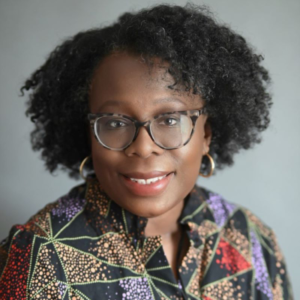Our nation’s NCI-designated comprehensive cancer centers are charged with developing and leading cutting-edge research to reduce the nation’s cancer burden.
Our research is especially needed to address racial and ethnic disparities in cancer care and outcomes. Such disparities are persistent, intractable, and often driven by the systemic legal, economic, educational, and social barriers to health and well-being that marginalized groups have faced for decades.
Research is commonly defined as the creation of new knowledge, a definition that suggests it is always possible to conceptualize problems in novel ways. Indeed, the research enterprise can be creative and dynamic, and perspectives that challenge conventional approaches and methods are often welcomed because they help our science evolve.
However, too often in academic cancer centers, the dominant perspectives come from researchers who are white, degreed and naïve to the real-world experiences of those who the research is intended to benefit.
Proponents of community-engaged research maintain that “top-down,” scientist-driven research that does not meaningfully involve non-scientist community members in its formative phases or during implementation will miss the mark.
The NCI seemed to acknowledge this when it revised its Cancer Center Support Grant guidelines in 2016 and mandated that all comprehensive cancer centers include coordinated community outreach and engagement initiatives in their applications.
It further emphasized this priority in 2019, requiring these applications to describe, “how the cancer center has reached out to and engaged with community members and organizations in its catchment area to inform cancer research and control efforts of particular relevance to the catchment area,” and how the center has communicated community needs to its members and catalyzed research across basic, clinical, translational and population sciences.
At the Barbara Ann Karmanos Cancer Institute, the Office of Cancer Health Equity and Community Engagement began coordinating a relevant community-based project coincident with these changes.
This models a central principle of community-engaged research: academic researchers and community members bring different, but equally important knowledge to collaborative research efforts.
OCHECE adapted the HealthLink model that is guided by the use of a participatory research approach in which researchers and community members collaborate on an ongoing basis in an iterative process of problem definition and problem solving.
HealthLink is driven by Cancer Action Councils: groups of community volunteers who use their knowledge of their respective communities to address pressing cancer-related concerns.
As part of Karmanos’ Michigan Cancer HealthLink, a statewide network focused on building research capacity in diverse communities, my office partners with social service agencies, faith-based organizations and federally-qualified health clinics to coordinate CACs that include 8-16 survivors, caregivers and advocates. These members meet monthly and are committed to improving cancer outcomes through research.
Through these CACs, we work to build community involvement in research by delivering a curriculum that teaches research fundamentals using accessible language and examples. The nine-module curriculum includes sessions on how to develop a research question, review literature and evaluate information sources, research design, research ethics, and power and politics in community-academic partnerships.
We also take CAC members through interactive exercises to facilitate evidence prioritization, which includes the council’s vision and objectives for research, their identification and prioritization of research topics (including priority populations, conditions, interventions and strategies), and the development of specific research questions.
Karmanos’ Michigan Cancer HealthLink also prioritizes relationship building between community CACs and our academic researchers who often co-teach the curriculum modules and use their own research as an example to reinforce the concepts featured in the module they are covering.
These interactions between our community members and researchers are essential as they enter a dialogue through which the public relevance of ongoing research is explored. CAC members offer their perspectives to help ensure local values and priorities are reflected in research, and CAC members learn from researchers and contribute to the science by raising additional research questions, commenting on research methods or offering interpretations of findings.
This models a central principle of community-engaged research: academic researchers and community members bring different, but equally important knowledge to collaborative research efforts.
Today, Karmanos’ Michigan Cancer HealthLink has about 90 CAC members across eight CACs in six cities in southeast Michigan, with more planned in other parts of our catchment area statewide. Five of these CACs represent neighborhoods or regions, three of which are predominantly African American, while other councils represent populations, specifically LGBTQ adults, Arab Americans and African American men. The research priorities identified by these groups are broad, ranging from work on supportive care for cancer patients, to familial and genetic cancer risk, to the financial toxicity of cancer treatment.
There is some overlap in the priorities established by these groups, but the research questions that emerge from these priorities often reflect distinct group perspectives. For example, the predominantly African American CAC based in Conner Creek on the east side of Detroit, and the more racially diverse LGBTQ CAC both identified cancer caregiving as a research priority.
However, the Conner Creek group raised questions about strains on the survivor-caregiver relationship and the impact of caregiving on the caregiver’s mental and physical health, especially among African American caregivers, while the LGBTQ group was more focused on experiences unique to that population, such as micro-aggressions by oncology staff, systemic discrimination in cancer care settings against same-sex partners and a general lack of social support systems for LGBTQ caregivers.
With appropriate institutional commitment, the HealthLink model is replicable, sustainable, and effective in amplifying community voice in cancer research agendas.
After research priorities and questions are identified, the Office of Cancer Health Equity and Community Engagement is tasked with mobilizing resources to translate CAC ideas into viable research projects that CAC members actively help to develop and implement. For both of the cancer caregiving examples described above, OCHECE was able to secure both internal funding and external foundation awards to adapt caregiving interventions for those populations.
Our greatest success to date was supporting two of our population scientists in obtaining NCI funding for an R01 study, of which a key aim is the community validation of a conceptual model that predicts African American survivorship outcomes. This model takes a social-ecological approach to describing factors, including neighborhood adversity and racism, and uses consensus-building strategies to obtain feedback from CAC members to refine the model, which will inform the measures in the longitudinal assessment of 600 African American breast and prostate cancer survivors.
At Karmanos Cancer Institute, the HealthLink model has been a novel but ultimately successful approach in ensuring community priorities and values are represented in our science. Michigan Cancer HealthLink has grown into a robust network that has made invaluable contributions to our center and was instrumental to receiving an “Exceptional” score following Karmanos’ 2020 NCI CCSG review.
However, this has not come without cost. Management of the CAC network requires considerable investment of resources, such as hiring and retention of culturally-competent staff members who are skilled in the time-intensive work of community engagement. Furthermore, all of our CAC members and the organizations that partner with us to coordinate CACs receive compensation for their time and effort, an arrangement that was determined to be the most equitable.
However, in our experience, CAC involvement has made our grant proposals more compelling and competitive and the funding received as a result has helped to offset these expenses. With appropriate institutional commitment, the HealthLink model is replicable, sustainable, and effective in amplifying community voice in cancer research agendas.









